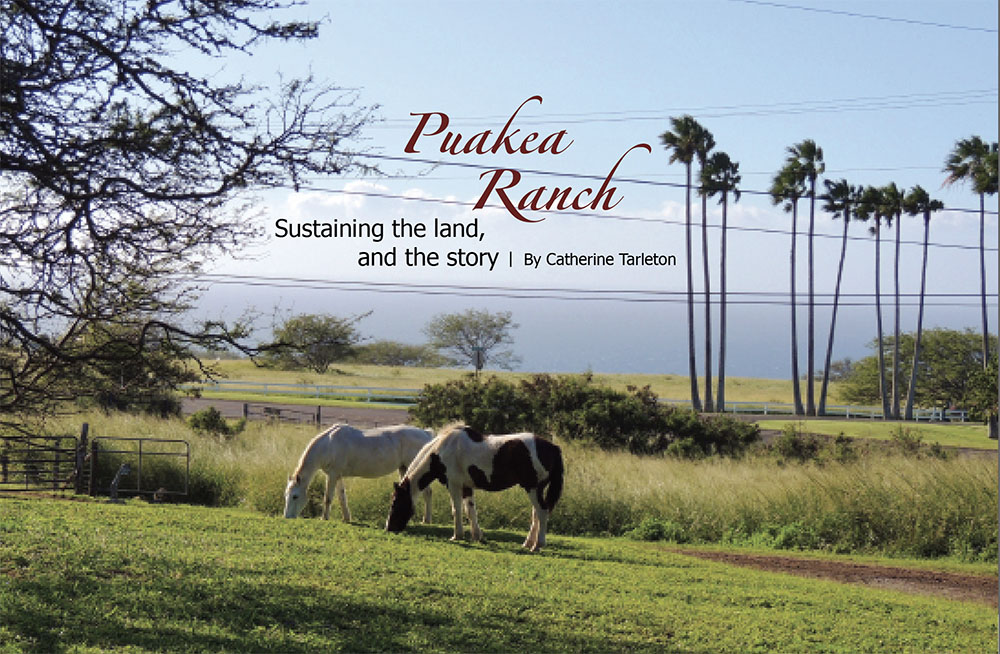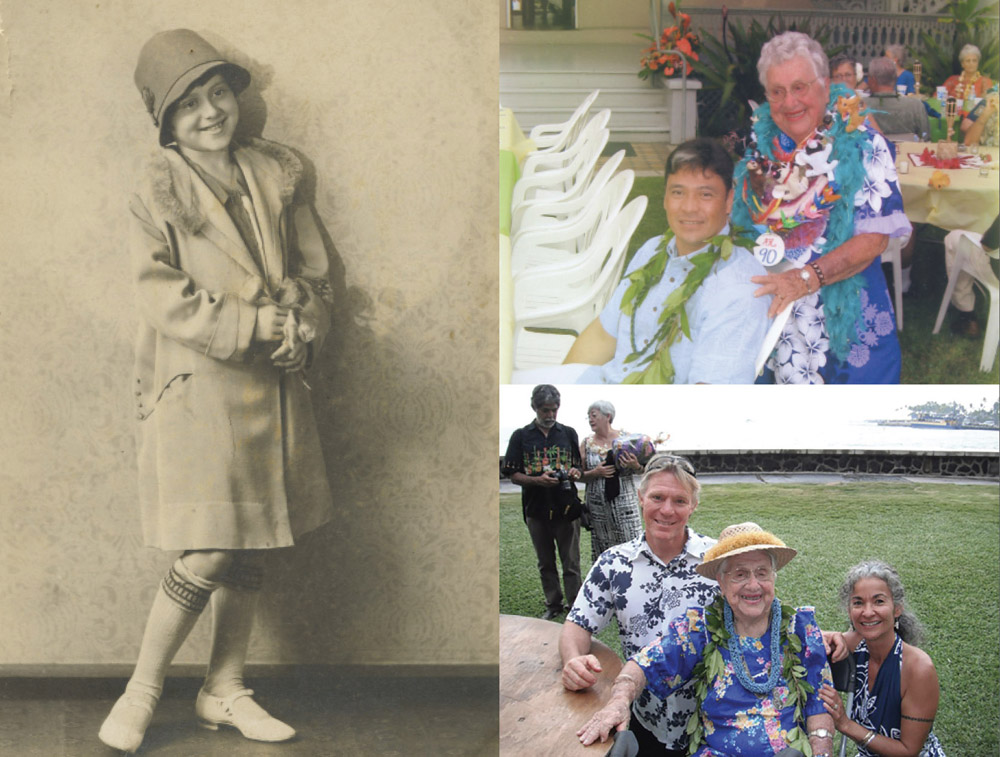
Pacific Tsunami Museum: Promoting Awareness and Research
 By Alan D. McNarie
By Alan D. McNarie
It was April of 1946, and U.S.S. LST-731 was on her way home. In the three previous years, she’d pushed her huge bow doors up against the shores of Guam and Iwo Jima to unload tanks and troops under fire, then she’d been converted to a hospital ship and performed occupation duty in the Far East until just two months before. Now, she was a couple of days out of Honolulu on her way back to her home base in Norfolk, Virginia when a radio message caused her captain to reverse course.

On April 1, 1946, an earthquake in the Aleutian Islands sent a tsunami crashing into Hilo and the Hāmākua Coast. Hundreds of homes and businesses had been demolished in Hilo. In terms of percentage of population, no town had probably been hit harder than Laupāhoehoe, which until that day had been located on a low spit of land on the Hāmākua Coast. Much of the town had washed out to sea—including Laupāhoehoe High School and many of its teachers and students. U.S.S. LST-731’s new orders were to look for survivors.
The ship had just finished rescuing a woman clinging to a door when someone spotted a boy in a life raft.
Fifteen-year-old Yoshikazu “Kazu” Murakami was one of the Laupāhoehoe students. A plane had spotted him earlier and dropped the raft, however he was in bad shape, suffering from dehydration and severe sunburn. The U.S.S. LST-731 dropped a cargo net over the side, but he likely wasn’t strong enough to climb it by himself. A sailor named David Cook went down the net to retrieve him.
David was only 19 himself, yet no stranger to life-or-death situations. The previous year, he’d been on the U.S.S. LST-731 when it unloaded amid the gunfire on Iwo Jima, and had watched from the deck as the marines raised the flag atop Mount Suribachi. Then, he’d been engaged in the grim business of killing Japanese. Now, he was risking his life to save a Japanese-American boy.
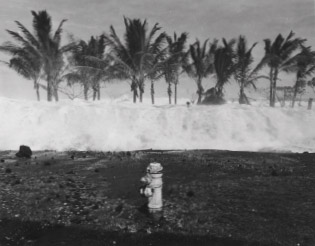
“The first pass they went by, the boat missed me; my heart sank,” Kazu would recall later.
The ship came around for another try, even though it was now perilously close to shore. Kazu must have endured a long, agonizing wait; LSTs were capable of only ten knots, and their flat bottoms made them clumsy on the open ocean. Their sailors joked that LST stood not for “landing ship, tank,” but for “long, slow target.”
On the second pass, David managed to snag Kazu’s arm and helped him up the net to the deck. Another sailor, Texan Louis Beago, snapped two photographs of the rescue.
“I passed out because I had to use all my strength to be saved,” recalled Kazu, later. “That was the last thing I remember. The next thing I knew, I was in a bunk bed” in a Hilo military hospital. He was one of the lucky ones. Nineteen of his classmates and five teachers perished.
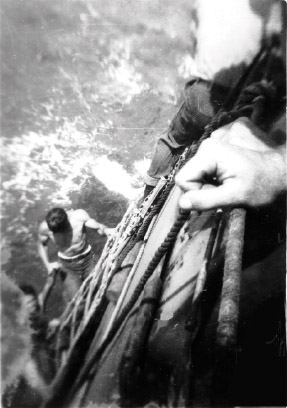
He would never have met his rescuer again if it weren’t for an unlikely sequence of events and a dedicated group of people: the founders, staff, and volunteers of the Pacific Tsunami Museum in Hilo, which has made a concerted effort to gather the stories of tsunami survivors.
It began in August of 1998, when the museum got a letter from Louis describing the rescue and including his two photos. He didn’t know the name of the boy on the raft or the sailor on the net.
Then, a remarkable coincidence: in October of 1999, Glenn and Teresa Murakami, on holiday from California, visited the museum. Glenn saw one of Beago’s photos and wondered if it was of his father, Kazu. Then, only eight days later, David and his wife visited the museum. He recognized himself clinging to the net in Louis’ picture.
The museum invited both Kazu and David to a landmark event—its first “Tsunami Story Festival,” in which tsunami survivors recounted their tales. Neither knew that the other one was coming until they were introduced. Kazu finally got to thank the man who saved him.
The Story Festival has since become an annual event, a highlight of Tsunami Awareness Month that the museum and Hawai‘i County Civil Defense sponsors every April. This year’s festival will focus on stories of downtown Hilo and will take place on April 19 at Hilo Hongwanji’s Sangha Hall. Other events will include commemorative ceremonies for Laupāhoehoe and for Shinmachi, the primarily Japanese community that once stood where Wailoa State Park now stands; a student poster contest; a “tsunami survival fair;” and free admission to the museum on Friday, April 3. Dates for some of the events haven’t been set yet, and will be upcoming on Tsunami.org.

It’s all part of the museum’s larger mission to prevent more deaths by promoting tsunami awareness and research. Over the years, PTM has amassed a huge archive with hundreds of narratives by tsunami survivors.
“We’ve been actively trying to do that before these people pass on—especially the survivors from 1946,” says Barbara Muffler, the museum’s archivist. Survivors typically come to the museum where “we set a camcorder…and basically have them tell their story.”
The stories are transcribed and become part of the archives. Parts are used in events and exhibits. Several appear on the website and are used in the museum’s educational programs. Researchers can view the archived narratives by appointment.
“I’ve assisted NOAA,” says Barbara. “I’ve assisted writers and filmmakers for a fee.”
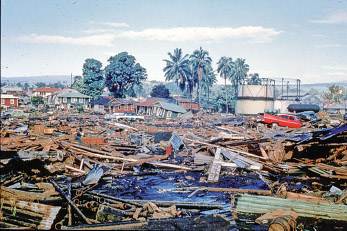
And the archive, along with the museum’s other activities, has expanded beyond Hawai‘i, thanks in large part to the museum’s science advisory council chair Dr. Walter Dudley. Dudley has traveled the world, collecting data and advising other organizations about tsunamis. Wherever he’s gone, he’s also interviewed survivors. The archives now hold survivor narratives from four towns in Alaska that suffered a huge tsunami in 1964. After the massive Indian Ocean tsunami in 2004 that killed an estimated 230,000 people in 14 countries, Dudley interviewed survivors and gathered data in Thailand, the Maldives, Indonesia, and India. With other PTM staffers, he has helped set up other tsunami museums in Alaska; Ranong Province, Thailand; and Kerala, India.
Today, the museum in Hilo is packed with exhibits presenting a worldwide picture of both the science and the horror of tsunamis. Mention “tsunami” locally, for instance, and most people think of the 1946 waves (usually a tsunami is not one surge, itʻs a sequence of them that can take place over hours) or the equally devastating tsunami that hit Hilo in 1960 and wiped out the business district of Waiākea. (How many people under the age of 50 know today that there was a Waiākea business district?).
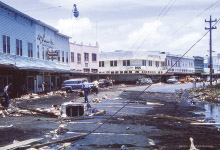
Museum visitors also learn that in 1837, a missionary used a tsunami in Hilo as a “sign from God” to persuade native Hawaiians to convert to Christianity; that an 1877 tsunami “virtually annihilated” the villages of Kawa‘a, Honu‘apo, and Nīnole; and also wiped out a quarantine hospital on Moku Ola (Coconut Island); that six died in a tsunami in 1952; and that in 1958 a tsunami generated by a local earthquake killed two campers and injured 19 at Halapē in Hawai‘i Volcanoes National Park. And they learn that, although the devastation to property in the 1960 quake was even more horrendous than in 1952, there were only 61 deaths, as opposed to 159 in 1946.
The big difference? An early warning system was in place in 1960.
The big killer? Curiosity. Many of the casualties resulted from people rushing down to see the waves instead of fleeing.
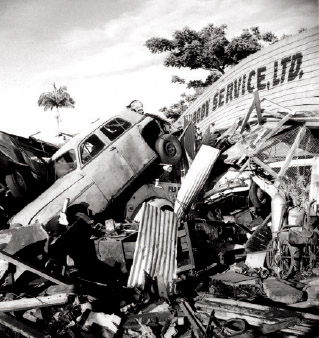
Driving home all these facts and making them visceral, are the stories and quotes of the survivors: Donald Ikeda, whose family barely escaped by fleeing across rooftops in 1946; Tom Goya, whose family went back to check on their three businesses after the 1960 tsunami, and found only foundation slabs; Marsue McGinnis, a Laupāhoehoe teacher who lost five housemates and was pulled out of the ocean by her future husband; a survivor who remarked of a relative, “She was all bruised up. It was like somebody took a ball peen hammer or something to her…”.
And one survivor’s advice, echoed by many others: “Get the hell out of there fast…You don’t know how big it’s going to be.” ❖
Photos courtesy: Pacific Tsunami Museum Archives
Contact Pacific Tsunami Museum
Contact writer Alan D. McNarie

